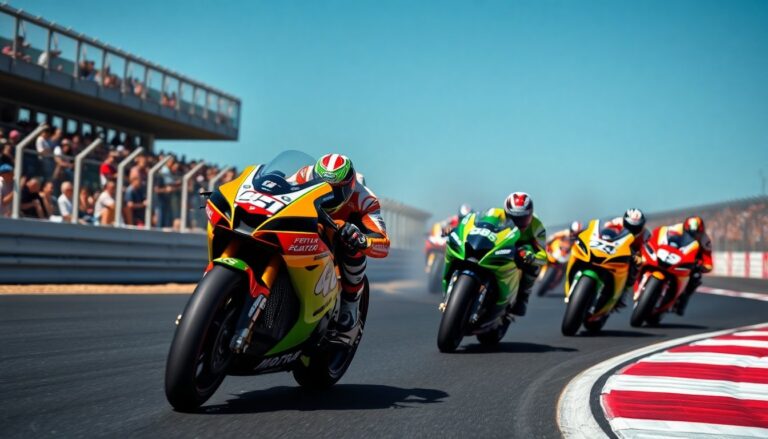Argomenti trattati
The MotoGP series stands as one of the most exhilarating forms of motorsport in the world. With roaring engines and breathtaking speeds, it captivates millions of fans globally. However, beyond the surface lies a complex world of technology, strategy, and sheer human skill that fuels the passion for this prestigious sport.
This article delves into the history, technological advancements, and key players that make MotoGP a unique spectacle in the realm of motorsports.
The history of MotoGP
The origins of MotoGP can be traced back to the early 20th century. The inaugural world championship was held in 1949, featuring just a handful of races. Over the decades, the series has evolved dramatically, with advancements in motorcycle technology and racing strategies leading to unprecedented levels of competition.
In the early years, the races were dominated by European manufacturers like MV Agusta and Yamaha. As the sport grew, so did its popularity, attracting manufacturers from Japan and beyond. The introduction of four-stroke engines in the late 1990s marked a significant turning point, enhancing performance and efficiency.
Significant milestones
Several milestones have defined the MotoGP landscape. The 500cc era was notable for its raw power and the legendary riders who competed during this time. Names like Giacomo Agostini and Mick Doohan became synonymous with excellence.
In 2002, the MotoGP category was officially introduced, transitioning from the traditional 500cc class to a new era of racing. This shift allowed for more technological innovation and a wider variety of manufacturers to compete, leading to fierce rivalries that kept fans on the edge of their seats.
Technological advancements in MotoGP
One of the most captivating aspects of MotoGP is the continuous evolution of technology. The sport is at the forefront of motorcycle engineering, with manufacturers investing heavily in research and development. Innovations such as traction control, anti-lock braking systems, and advanced aerodynamics have transformed the racing experience.
Today’s MotoGP bikes feature cutting-edge technology that enhances performance and safety. The use of data analytics has become commonplace, allowing teams to make real-time adjustments based on a wealth of information gathered during practice and races.
The role of data in racing strategy
Data plays a crucial role in shaping racing strategies. Teams analyze everything from tire performance to fuel consumption, ensuring that riders have the best chance of success on the track. The ability to predict and adapt to changing conditions is vital, and teams rely on telemetry data to make informed decisions.
This level of sophistication means that MotoGP is not just about raw speed; it is also about strategy, where every second counts. Riders and their teams must work in harmony, blending instinct with data-driven insights to navigate the complexities of each race.
The stars of MotoGP
This article delves into the history, technological advancements, and key players that make MotoGP a unique spectacle in the realm of motorsports.0
This article delves into the history, technological advancements, and key players that make MotoGP a unique spectacle in the realm of motorsports.1
The impact of MotoGP on motorsports
This article delves into the history, technological advancements, and key players that make MotoGP a unique spectacle in the realm of motorsports.2
This article delves into the history, technological advancements, and key players that make MotoGP a unique spectacle in the realm of motorsports.3
This article delves into the history, technological advancements, and key players that make MotoGP a unique spectacle in the realm of motorsports.4

